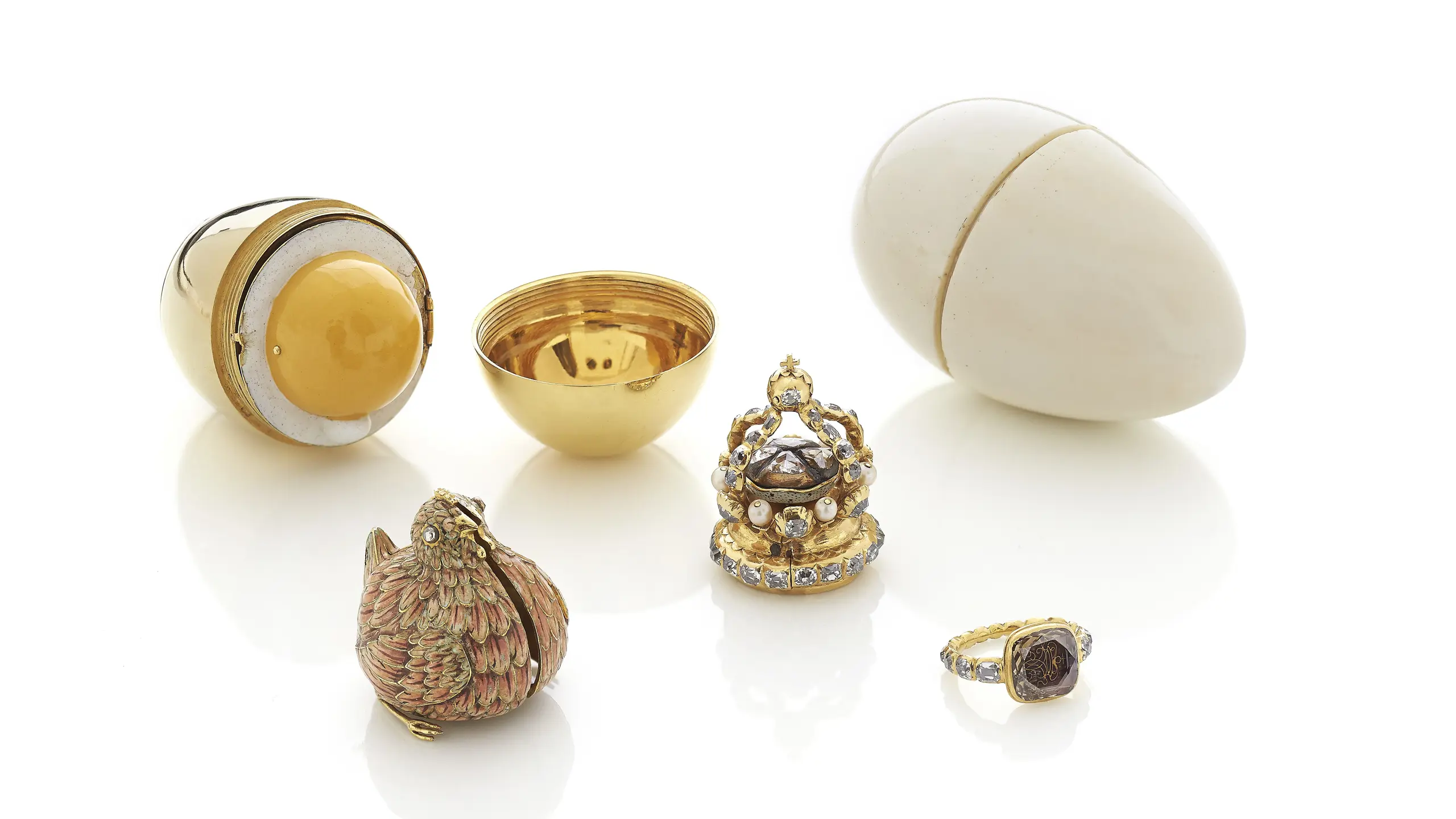Golden egg with hen
This golden egg was made in France around 1720 and can be divided into five parts: ivory egg shell, golden egg shell, hen, crown and ring. The egg could also be used as a perfume container. It is believed to have been a gift from Charlotte of Orléans to Queen Caroline of Great Britain.

Golden egg with hen
This golden egg was made in France around 1720 and can be divided into no fewer than five parts: ivory egg shell, golden egg shell, hen, crown and ring. In addition to the many hidden items, the egg can also be used as a perfume bottle, alos known as a vinaigrette - a container that the owner could hold up to their nose if the ait in the room was foul.
Originally, the egg is believed to have been a gift from Charlotte of Orléans to Queen Caroline of Great Britain. Through inheritance, the egg passed to the Danish royal family in the late 18th century, when Queen Marie inherited the egg. She in turn passed the egg on to her youngest daughter, Princess Vilhelmine Marie. In 1879, the Princess loaned the egg to the large exhibition on art and industry, where the Russian Empress may well have seen it.
A few years later, Court Jeweller Fabergé initiated his production of the famous Fabergé eggs – probably with inspiration from this particular egg.



